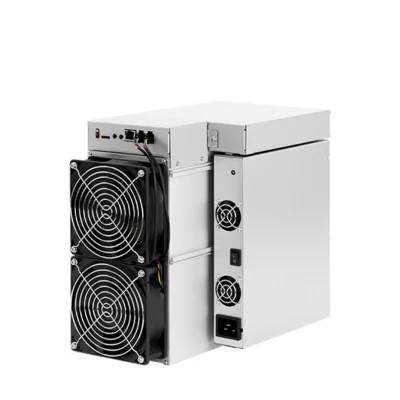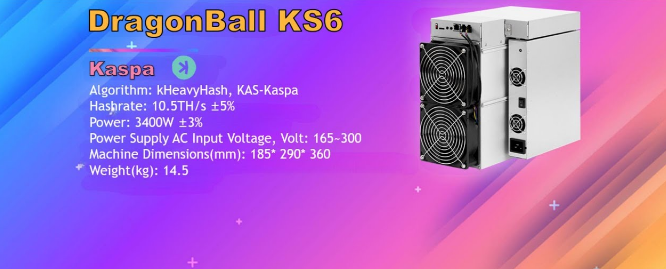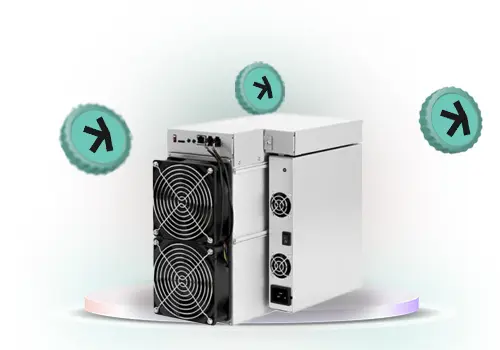How to Assemble a Mining Rig with DragonBall Miner KS6?
The cryptocurrency mining landscape is constantly evolving, and staying ahead requires cutting-edge hardware that delivers both performance and reliability. The DragonBall Miner KS6 Kaspa Miner is a standout solution in this space, specifically engineered for the KHeavyhash algorithm. With its superior hash rate, energy efficiency, and robust thermal management, the KS6 is a top choice for both professional mining operations and serious hobbyists. This guide will walk you through the process of assembling a mining rig with the DragonBall Miner KS6, ensuring you maximize its potential while maintaining operational efficiency.
Introduction to the DragonBall Miner KS6
The DragonBall Miner KS6 is a state-of-the-art mining machine designed to excel in Kaspa mining. It boasts an impressive hash rate of 10.5 Th/s while maintaining an energy efficiency ratio of 323.81 j/Th. This makes it one of the most efficient miners in its class, offering a competitive edge in the Kaspa mining ecosystem.
The KS6 features a quad-fan cooling system that ensures optimal thermal performance, even during extended mining sessions. Its compact form factor (360 x 185 x 290mm) and manageable weight (14.5kg) make it easy to integrate into various mining setups. Additionally, its wide-range power input (165-300V) and 3400W power consumption ensure compatibility with most power infrastructures.
Key Advantages of the DragonBall Miner KS6
Before diving into the assembly process, it’s important to understand the key advantages of the KS6 that make it a standout choice:
- Superior Performance: With a hash rate of 10.5 Th/s, the KS6 delivers unmatched performance for Kaspa mining.
- Energy Efficiency: At 323.81 j/Th, it minimizes power consumption, reducing operational costs.
- Robust Cooling System: The quad-fan design ensures effective heat dissipation, prolonging the miner’s lifespan.
- Enterprise-Grade Reliability: Built with high-quality components, the KS6 is designed for continuous operation with minimal maintenance.
- Modular Design: Easily replaceable components simplify maintenance and reduce downtime.
- Future-Proof Architecture: Forward-compatible features ensure the KS6 remains relevant as mining requirements evolve.
Step-by-Step Guide to Assembling Your Mining Rig with the DragonBall Miner KS6
Step 1: Unbox and Inspect the KS6
When your DragonBall Miner KS6 arrives, carefully unbox it and inspect all components for any damage during transit. The package should include:
- The KS6 mining unit
- Power supply cables
- Ethernet cable
- User manual and warranty information
Ensure that all components are present and undamaged before proceeding.
Step 2: Choose the Right Location
The KS6 generates significant heat during operation, so selecting an appropriate location is crucial. Ideally, set up your mining rig in a well-ventilated area with a stable ambient temperature between 0-40°C. Avoid confined spaces or areas with high humidity, as these can affect the miner’s performance and longevity.
If you’re setting up multiple KS6 units, ensure adequate spacing between them to allow for proper airflow.

Step 3: Set Up the Power Supply
The KS6 requires a 3400W power supply with a wide-range input of 165-300V. Follow these steps to ensure safe and efficient power delivery:
- Use a dedicated circuit to avoid overloading your electrical system.
- Connect the power supply unit (PSU) to the KS6 using the provided cables.
- Ensure the PSU is grounded to prevent electrical hazards.
*Pro Tip:* Consider using a surge protector or uninterruptible power supply (UPS) to safeguard your mining rig against power fluctuations.
Step 4: Connect to the Network
The KS6 features an RJ45 Ethernet port supporting 10/100M connectivity. To connect the miner to your network:

- Plug one end of the Ethernet cable into the KS6 and the other end into your router or switch.
- Assign a static IP address to the miner for easier management and monitoring.
*Note:* Ensure your network has sufficient bandwidth to handle the miner’s data transmission requirements.

Step 5: Configure the Miner
Once connected, you’ll need to configure the KS6 to start mining. Here’s how:
- Access the miner’s web interface by entering its IP address in your browser.
- Log in using the default credentials (usually found in the user manual).
- Enter your mining pool details, including the pool address, port, and worker credentials.
- Save the settings and restart the miner to apply the changes.
*Example Configuration:*
- Pool Address:
stratum+tcp://kaspa-pool.com:3333 - Worker Name:
YourWorkerName - Password:
x
Step 6: Monitor and Optimize Performance
After setup, regularly monitor the KS6’s performance to ensure it’s operating optimally. Use the miner’s built-in dashboard to track metrics such as:
- Hash rate
- Temperature
- Power consumption
- Uptime
If you notice any irregularities, such as overheating or reduced hash rate, take immediate action to address the issue. This may include cleaning the fans, adjusting the cooling system, or repositioning the miner for better airflow.
Step 7: Implement Maintenance Practices
The KS6’s modular design makes maintenance straightforward, but regular upkeep is essential for long-term performance. Here are some best practices:

- Clean the fans and vents every 2-3 months to prevent dust buildup.
- Inspect the power supply and cables for wear and tear.
- Replace worn-out components promptly to avoid downtime.
- Keep the firmware updated to benefit from performance enhancements and bug fixes.
Real-World Applications and Benefits
The DragonBall Miner KS6 is ideal for various mining scenarios, including:
- Large-Scale Mining Farms: Its energy efficiency and robust cooling system make it a cost-effective choice for industrial-scale operations.
- Home Mining Setups: The compact design and reasonable noise levels (75dB) allow for deployment in residential environments.
- Remote Mining Locations: With a wide storage temperature range (-20 to 70°C), the KS6 can operate reliably in diverse climates.
- Sustainable Mining Operations: The low power consumption aligns with eco-friendly mining practices, reducing the environmental impact.
Conclusion
Assembling a mining rig with the DragonBall Miner KS6 is a straightforward process that unlocks exceptional performance for Kaspa mining. Its superior hash rate, energy efficiency, and robust thermal management make it a top-tier choice for miners of all levels. By following this guide, you can set up your KS6 rig with confidence, ensuring optimal performance and longevity.
Whether you’re running a large-scale mining farm or a small home setup, the KS6’s enterprise-grade reliability and future-proof design make it a valuable investment in the ever-evolving world of cryptocurrency mining. Happy mining!